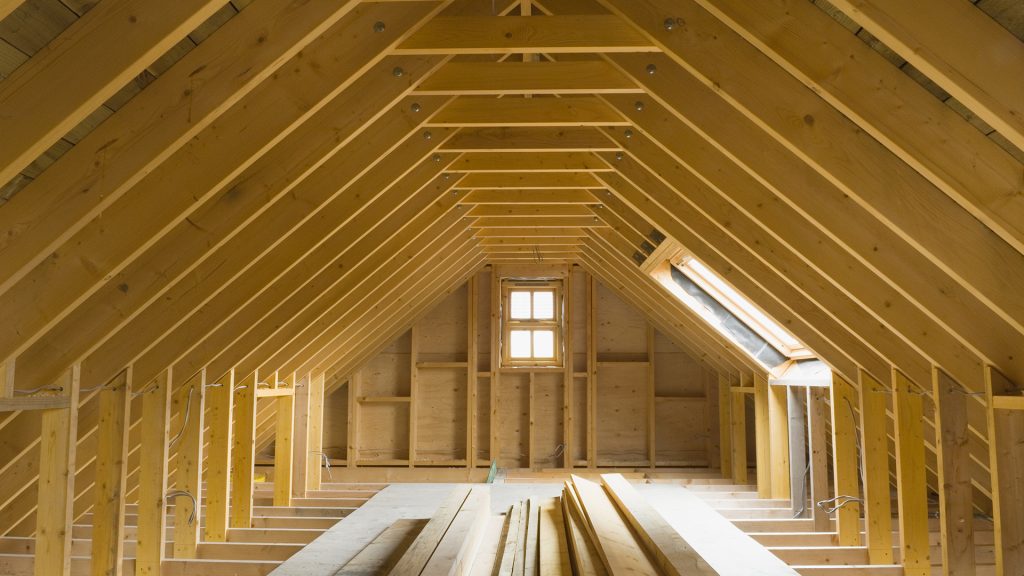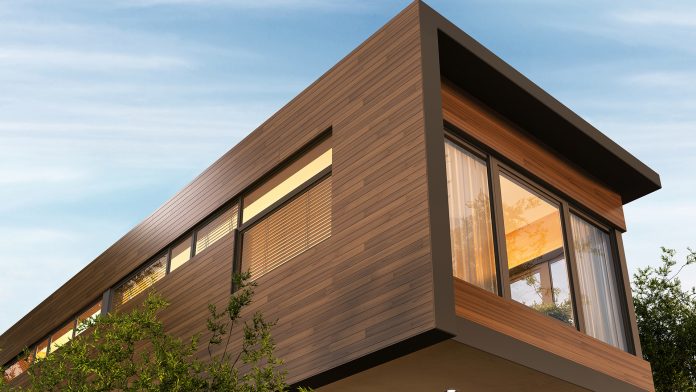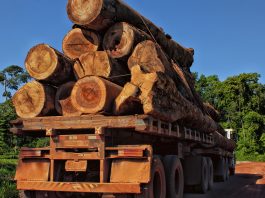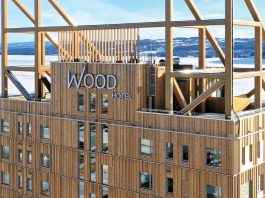Rupert Scott, Membership and Marketing Manager at TRADA, outlines the progression of timber as a building material and its role in sustainable construction.
The use of timber in the construction industry varies dramatically across Europe in both volume and design. Some countries, such as Austria and those in Scandinavia, have been building using a significantly higher proportion of wood than the UK for a very long time. These countries also use a far greater proportion of their land area for forestry, making timber a very important business sector. Such nations have also typically adopted the use of engineered timber products as these technologies have been developed and invested in early in new factories to build cross-laminated timber (CLT).
The UK, France, and Italy have far larger populations and population densities in comparison – which means far larger construction industries – yet, timber currently accounts for a much lower percentage of these markets. However, there are many factors that influence how open a country is to new technology besides the prevalence of the raw material, such as the type of building regulations in use or insurance requirements. Since the 1980s, the UK has had a functionally oriented set of building regulations, which means we are able to be receptive to new ideas and we can implement them more easily than countries that use more prescriptive, code-based systems. As a result, our design communities are innovative and have spearheaded ‘trying things out’.
In the UK, we have also been carefully growing the market for traditional timber frame. Timber frame currently accounts for around a quarter of all new homes being built in the UK, according to the Structural Timber Association (STA). Other forms of timber construction are also finding their niches: volumetric, for example, works well when there is lots of repetition, so is often used for student accommodation or hotel toilet pods.
Common misconceptions
Of course, as usage of the material increases, misconceptions can creep in. Timber is a natural material, so understanding its characteristics and properties – the ‘nature’ of wood – enables designers to utilise timber well. They need to understand the relationship between moisture content at the time of installation and in service, due to the effect of moisture content on length of service life and dimensional stability. There is a misconception that you can treat large blocks of CLT as much as you would treat concrete and leave it to get wet. This is certainly not the case; design and installation processes need to be adopted that ensure the moisture content of the CLT (and any other wooden elements) are carefully managed.
There is also a belief that timber frame is necessarily far more prone to overheating than other forms of construction. Lack of ‘thermal mass’ is sometimes cited as the reason. This is not true. Overheating is often caused when large, unshaded windows face east, south, or west, but a canopy, veranda or shutters can avert most of these problems. The matter of the thermal insulation performance of all buildings – which affects the ability to retain warmth in the winter and ‘coolth’ in the summer – are determined by buildings regulations, which do not change according to the building system adopted.
Timber construction also has a reputation for costing the same as – or more than – traditional construction types, yet research has shown that there are many good savings to be had, despite similar material costs. This is because timber buildings typically require lighter foundations and shorter build times and result in fewer site deliveries as well as less site storage requirements and construction waste.
Finally, many people believe that only buildings that have lots of external wood on them are structurally made of wood, when in fact the timber of most structural timber buildings is unseen.

Sustainability
The construction industry is a major contributor to carbon emissions, as the construction and operation of buildings account for almost 40% of them. The industry has undeniably made strides in reducing operational carbon – the emissions from energy used to heat, cool and light buildings – but ambitious goals to be net zero by 2050 will fall short without careful consideration of the embodied carbon in materials, as well as the construction process.
This is evidenced by recent studies that have shown that 50% of carbon emissions in new build housing and offices come from the building materials, the construction process, maintenance, and end of life.
These embodied carbon emissions are currently unregulated.
In comparison to other building materials, timber is better positioned to meet the needs of a sustainable construction industry. It is naturally low carbon, environmentally friendly, and has the remarkable ability to sequester carbon through photosynthesis.
Specifically, trees ‘sequester’ carbon from the atmosphere in the form of CO2. The carbon is then consumed by the tree and stored as wood, releasing O2 back into the air. When the tree dies, its stored carbon is released back into the atmosphere. However, if harvested, the sequestered carbon stays within the timber until it is otherwise burnt or decays. This means that, if the material is salvaged at the end of a timber building’s life, and further reused or recycled, the carbon remains sequestered.
Consider the wooden door in Westminster Abbey. When dated, it was revealed that the wood used was felled after 1032 AD and the door constructed sometime in the 1050s. This demonstrates the full potential of timber, if appropriately designed for durability and reuse.
As a natural material, timber is a renewable resource if it is sourced from a sustainably managed forest under a certified scheme – e.g. PEFC, FSC, or Grown in Britain – and has the lowest environmental impact when you take its production and life cycle into consideration. The discussions around sustainable forestry warrant an in-depth article in their own right, certainly, but the fundamental point remains: even if you do not take the sequestration effects into consideration, timber buildings are inherently lower carbon when compared to most other mainstay materials of the construction industry.
These points, in combination with wood’s remarkable diversity of use and aesthetics, suggest that the necessary actions taken to reach net zero might in fact herald a new ‘Timber Age’. We can draw on the collective experience of all the generations and millennia of timber use proceeding us, as well as utilise the new materials, systems and techniques afforded to us by an innovative and dynamic industry.
This is why it is imperative that we respond to common misconceptions head on. Over the last decade alone, we have witnessed an uptake of timber use in construction by engineers and architects who are excited to use the material. However, to capitalise on this opportunity, we must have all the right ingredients; it takes only one weak link – like a skills or materials shortage, or a misinterpretation of risk factors – to cast doubt on the material and allow its use to lose momentum.
We are lucky to have the annual Wood Awards, which celebrate excellence in architecture and product design using wood in the UK, to both promote and champion the use of timber in beautiful and functional timber buildings. Over the last few years, we have seen first-hand a dramatic combination of awe-inspiring roofs over sweeping timber buildings, repurposed sheds, and experimental buildings created by students. Not only do these Awards serve to inspire the wider industry, but they reveal to potential clients and developers across the UK that timber can be the answer to any solution, if intentionally designed and built. The opportunities are limitless.
References
https://www.wbcsd.org/contentwbc/download/12446/185553/1
https://woodknowledge.wales/wp-content/uploads/2020/12/WKW_tech_doc_final_2.12.2020.pdf
https://www.trada.co.uk/news/is-carbon-sequestration-in-timber-buildings-real/
Rupert Scott
Membership and Marketing Manager
TRADA
https://www.trada.co.uk
https://www.linkedin.com/company/trada_/
Please note, this article will also appear in the eighth edition of our quarterly publication.





